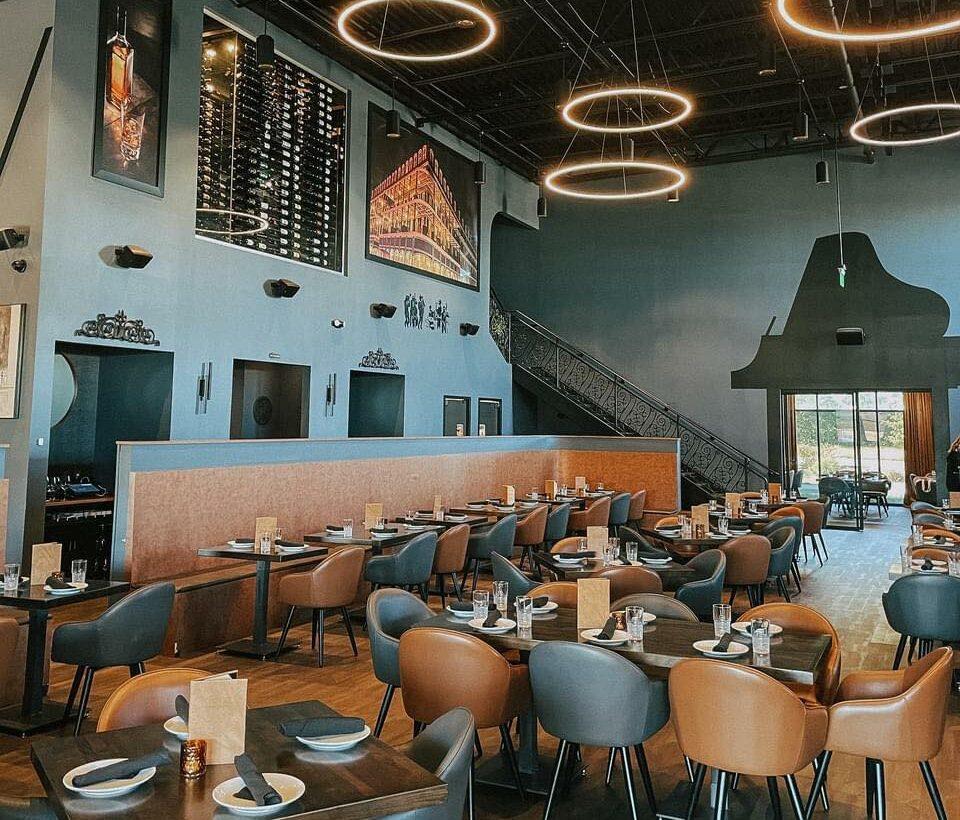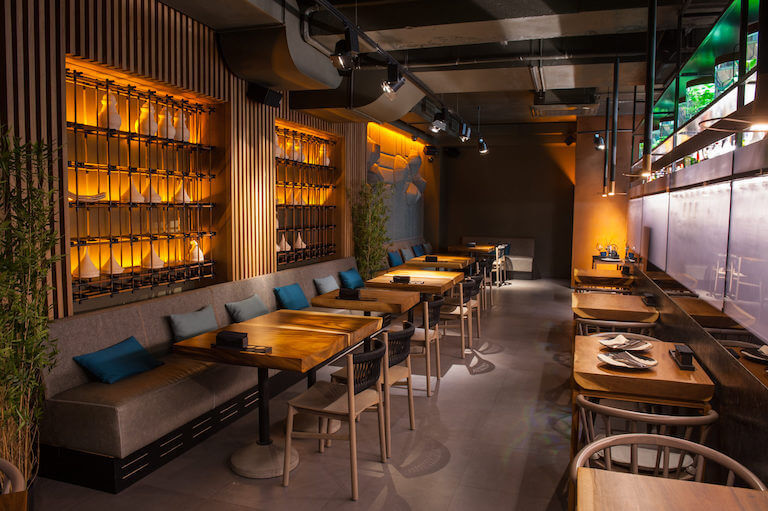Chinese Food Islamabad: Delight In Authentic Chinese Cuisine at its Best
Chinese Food Islamabad: Delight In Authentic Chinese Cuisine at its Best
Blog Article
Savor Genuine Oriental Cuisine With a Pan-Asian Twist for a Cooking Experience
Starting a culinary journey with genuine Asian cuisine, enhanced with a Pan-Asian twist, uses a distinct opportunity to discover the rich tapestry of flavors that specify the region's diverse cooking traditions. This experience welcomes you to enjoy the beautiful balance of preferences-- wonderful, salty, spicy, and sour-- harmonized by fragrant herbs and seasonings. Picture the cutting-edge fusion of Thai curry and ramen or the unexpected joy of sushi burritos. As you contemplate these tempting meals, consider the social narratives and historic impacts that shape them, each bite using a story waiting to be discovered.

Discovering Pan-Asian Tastes
In the world of international gastronomy, Pan-Asian food attracts attention for its exceptional diversity and the harmonious interplay of flavors from numerous Eastern cultures. This cooking strategy celebrates the unique active ingredients and abundant traditions located across the continent, creating a tapestry of preferences that is both enjoyable and appealing. Trick to Pan-Asian food is its ability to balance contrasting tastes-- pleasant, salty, spicy, and sour-- while highlighting the quality and top quality of each active ingredient.
From the umami-rich soy sauce of Japan to the fiery chili peppers of Thailand, Pan-Asian food uses a substantial palette of flavors. These aspects are typically combined in creative methods, boosting dishes with layers of complexity. For instance, using great smelling natural herbs such as lemongrass and cilantro, common in Vietnamese and Thai cuisine, adds a rejuvenating illumination to meals, while the unification of coconut milk supplies a creamy, rich texture.
The focus on fresh produce and aromatic spices makes sure that each dish is not just a banquet for the preference buds yet additionally for the detects. Pan-Asian food invites diners to start a culinary journey, checking out the huge and differed landscapes of Oriental gastronomy with every bite.
Combination Meals to Attempt
While Pan-Asian cuisine is commemorated for its standard flavors, the modern culinary landscape is progressively embracing blend meals that blend these timeless aspects with impacts from other regions. This cutting-edge approach not just honors the rich heritage of Asian cookeries but additionally introduces unique taste experiences that attract modern tastes.
A prime instance of such a combination meal is the Korean-Mexican taco, where marinated bulgogi beef is covered in a cozy tortilla, topped with kimchi and a zesty gochujang-infused salsa. This combination weds the vibrant, full-flavored tastes of Korea with the vibrant, fresh aspects of Mexican food. Similarly, sushi burritos have actually obtained popularity, integrating the fragile artistry of Japanese sushi with the hearty, hand-held ease of a burrito, commonly featuring fusion active ingredients like tempura shrimp and avocado with a drizzle of wasabi mayo.
One more significant dish is Thai curry ramen, which infuses the luscious, fragrant seasonings of Thai curry right into the calming broth of standard Japanese ramen, developing an unified blend that tantalizes the senses. These combination recipes expand beyond mere novelty; they represent a culinary dialogue in between societies, encouraging exploration and development worldwide of Pan-Asian cuisine.
Crucial Components and Spices
To really appreciate Pan-Asian cuisine, one should comprehend the necessary active ingredients and spices that form its foundation. This diverse culinary style draws from a rich tapestry of Oriental practices, employing a harmonious blend of structures and flavors. Key components consist of soy sauce, fish sauce, and oyster sauce, which present a tasty umami depth necessary to Asian dishes. Corresponding to these are rice vinegar and mirin, offering a delicate acidity and sweetness.
Fragrant elements are crucial, with lemongrass, garlic, and ginger being common across different Pan-Asian dishes. These ingredients supply a great smelling base that improves the complexity of flavors. Seasonings such as star anise, cardamom, and cinnamon present heat and character, resembling impacts from areas like China and India.

Food Preparation Strategies and Tips
Understanding the art of Pan-Asian food calls for knowledge with its unique cooking strategies, each adding to the vivid tapestry of flavors this cooking practice is celebrated for. Central to these approaches is the stir-fry, a rapid cooking method that preserves the nutritional stability and vibrant shades of components. Using a frying pan, the stir-fry method enables for even warmth circulation, essential for attaining the characteristic texture and flavor balance of Pan-Asian recipes.
One more fundamental technique is steaming, especially common in Chinese cuisine. This gentle approach maintains the natural tastes and nutrients of ingredients, making it perfect for seafood and vegetables. Dumplings, a beloved staple, frequently benefit from steaming, causing soft, delicious structures.
Grilling, likewise indispensable, imparts great smoky depths to dishes such as Korean bulgogi or Japanese yakitori (Fine dining experience Islamabad). This technique commonly includes seasoning components, enabling flavors to pass through deeply before cooking over an open fire or warmer
Finally, grasping the art of stabilizing flavors-- pleasant, sour, salted, bitter, and umami-- is critical. Correctly layering these elements can elevate a meal from ordinary to extraordinary, using a facility and satisfying culinary experience that symbolizes the significance of Pan-Asian cuisine.
Dining Experiences Worldwide
Across the world, Pan-Asian food provides an unmatched eating experience, commemorated for its rich tapestry of flavors and lively presentations. This cooking phenomenon has gone beyond cultural borders, catching the hearts and palates of food fanatics worldwide. In worldwide cities like New York, London, and Sydney, Pan-Asian dining establishments offer as melting pots where culinary customs from Thailand, Japan, China, and past converge, giving diners with an eclectic mix of recipes that highlight the region's variety.
The global appeal of Pan-Asian food hinges on its ability to provide both authenticity and development. Chefs skillfully wed standard ingredients such as lemongrass, soy sauce, and miso with contemporary techniques, leading to dishes that are both acquainted and refreshingly brand-new. This blend allows restaurants to get started on a cooking trip that appreciates heritage while embracing modernity.
In addition, eating experiences are elevated through thoughtfully developed atmospheres that reflect the ethos of Pan-Asian visual appeals. From minimalist Japanese-inspired interiors to vibrant Thai-themed rooms, each restaurant uses an one-of-a-kind setting that matches the culinary offerings. Consequently, clients are not just consuming a dish however partaking in a social experience, making Pan-Asian eating a genuinely global sensation.
Final Thought
The expedition of Pan-Asian food offers an extensive understanding of the detailed interplay of tastes and cooking practices throughout Asia. By welcoming fusion recipes such as Thai curry ramen and sushi burritos, the cooking journey not just highlights the adaptability of conventional ingredients yet additionally showcases ingenious modern-day techniques. This gastronomic journey, enriched by necessary spices and cooking techniques, supplies a special chance to value the multiculturalism websites and culinary creativity that specify Pan-Asian food on a worldwide range.
Getting started on a cooking trip via authentic Oriental food, improved with a Pan-Asian twist, provides an unique possibility to discover the rich tapestry of flavors that specify the region's varied culinary customs.In the world of worldwide gastronomy, Pan-Asian food stands out for its exceptional variety and the unified interplay of flavors from various Eastern societies. Secret to anonymous Pan-Asian food is its capacity to stabilize different tastes-- sweet, salted, spicy, and sour-- while highlighting the freshness and high quality of each ingredient.

Report this page